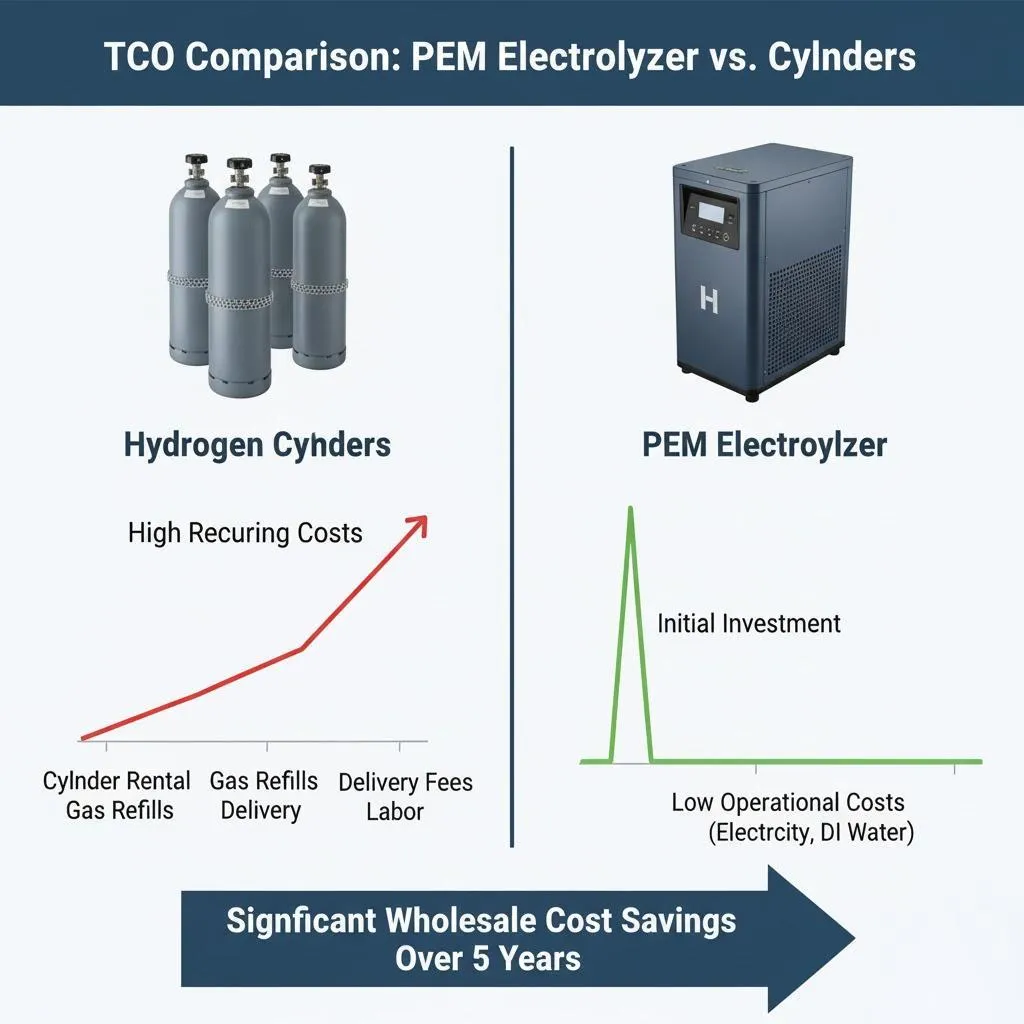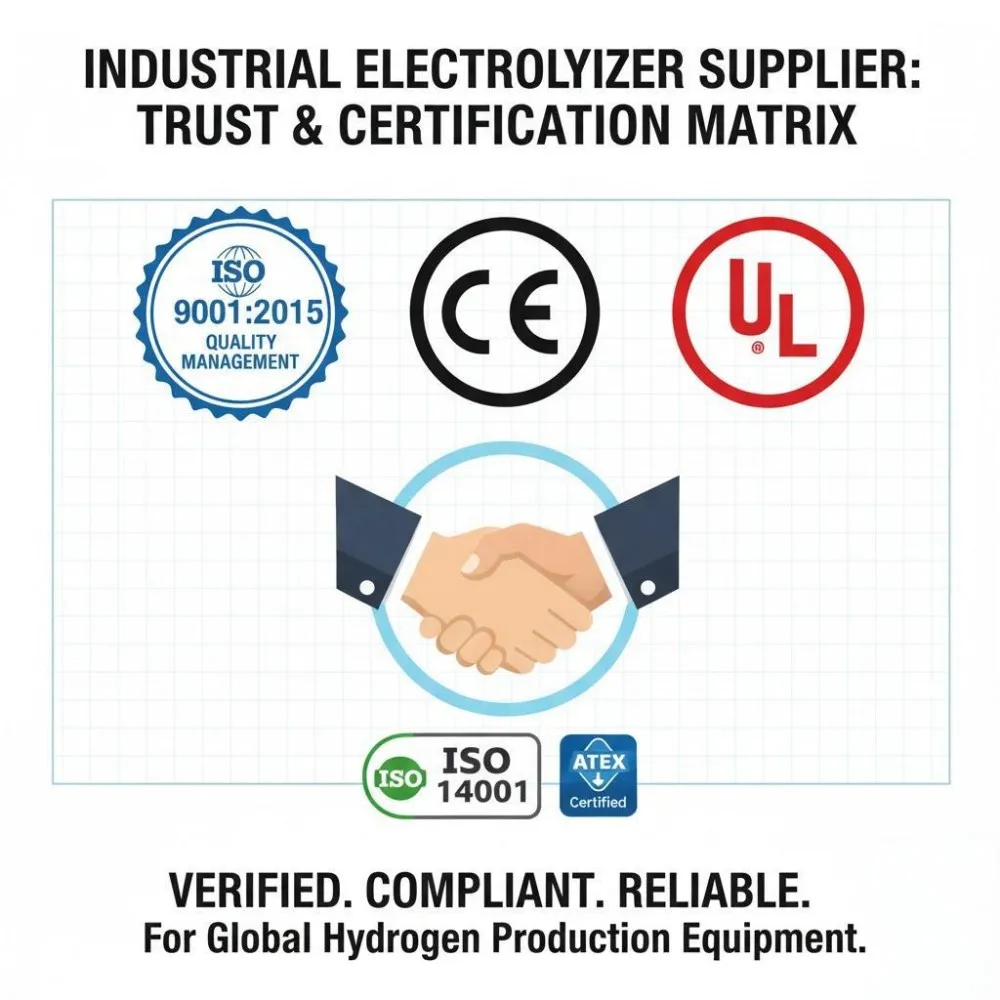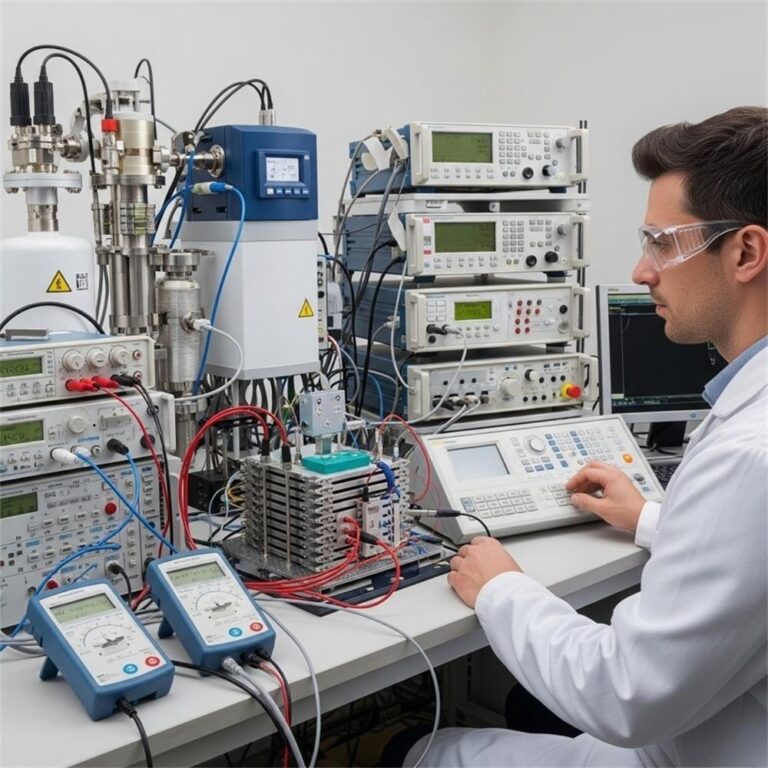Introduction: The Rise of Small-Scale Hydrogen and PEM Fuel Cells
As the world pivots toward cleaner and more sustainable energy solutions, hydrogen is emerging as a vital player in the energy transition. Its ability to serve as a zero-emission energy carrier makes it increasingly attractive for industries, governments, and researchers alike. Among the various hydrogen technologies, Proton Exchange Membrane (PEM) fuel cells have captured attention for their high efficiency, compactness, and quick start-up capabilities.
Traditionally, hydrogen has been delivered via gas cylinders or produced in large-scale industrial settings. However, small-scale, on-site hydrogen production systems—like the 1Nm3/h hydrogen generator—are transforming this landscape. These compact units are enabling a decentralized hydrogen supply that caters specifically to the needs of PEM fuel cell applications. From remote installations to research labs, these generators provide clean, pure hydrogen where and when it is needed.
Understanding PEM Fuel Cell Requirements
Hydrogen Purity: A Non-Negotiable Standard
PEM fuel cells demand ultra-pure hydrogen—typically 99.999% (5.0 grade) or higher—to function efficiently. Even minute impurities can poison the membrane, leading to performance degradation or complete failure.
Flow Rate and Pressure Needs
PEM fuel cells, depending on their application, often operate at pressures ranging from 1.5 to 3 bar and require a consistent flow of hydrogen. For smaller systems like those used in backup power or educational settings, a 1Nm3/h flow rate is typically sufficient to meet energy demands without over-sizing the hydrogen infrastructure.
Sensitivity to Impurities
Compounds such as carbon monoxide (CO), sulfur, ammonia, and moisture can severely affect PEM cell durability. Thus, it’s crucial that the hydrogen supply—whether generated or delivered—passes through purification stages to meet stringent fuel cell specs.
The 1Nm3/h Hydrogen Generator: A Perfect Match
Key Features and Benefits
A 1Nm3/h hydrogen generator delivers 1 normal cubic meter of hydrogen per hour—enough to support small PEM fuel cell systems. Its modular and compact design makes it ideal for localized hydrogen production, minimizing transportation risks and infrastructure costs.
PEM Electrolysis Technology
These generators typically employ PEM electrolysis, where electricity (ideally from renewable sources) splits water into hydrogen and oxygen. This method provides:
- High hydrogen purity
- Low footprint
- Scalability
- Quick response time
Advantages Over Delivered Hydrogen
| Aspect | On-Site Generation (1Nm3/h) | Delivered Hydrogen |
|---|---|---|
| Purity | 99.999% (with purification) | Varies |
| Cost over time | Lower (no delivery charges) | Higher (recurring costs) |
| Safety | No high-pressure transport | High-pressure hazards |
| Reliability | On-demand availability | Dependent on supply chain |
On-site production using a 1Nm3/h unit offers greater autonomy, enhanced safety, and cost savings, particularly in locations with limited access to industrial hydrogen suppliers.
Applications for 1Nm3/h Hydrogen Generators in PEM Fuel Cell Systems
Backup Power Systems
Hospitals, telecom towers, and data centers increasingly use PEM fuel cells paired with hydrogen generators to ensure uninterrupted operations during grid failures. A 1Nm3/h hydrogen generator provides sufficient hydrogen to run these systems for extended periods with minimal noise and emissions.
Remote Power Generation
From weather monitoring stations in the Arctic to remote research bases, PEM fuel cells with compact hydrogen generators offer dependable power in off-grid areas. Their lightweight and low-maintenance design is ideal for locations that are hard to reach or operate in extreme climates.
Material Handling Equipment
Many warehouses now deploy fuel cell-powered forklifts, which benefit from quick refueling and high uptime. A 1Nm3/h generator can produce enough hydrogen daily to service a small fleet, eliminating the need for cylinder storage or frequent deliveries.
Educational and Research Use
Universities and R&D facilities often use hydrogen and PEM fuel cells for demonstrations, testing, and prototype development. A 1Nm3/h generator provides an ideal balance of production capacity and affordability, while maintaining safety and ease of operation.
Technical Specifications and Considerations
Typical Specs of a 1Nm3/h Hydrogen Generator
| Parameter | Specification |
|---|---|
| Hydrogen Flow Rate | 1 Nm³/h |
| Purity | 99.999% (with purification) |
| Pressure Output | 10-30 bar (depending on model) |
| Power Consumption | ~4.5–6.0 kWh/Nm³ |
| Dimensions | ~1000 x 700 x 1800 mm |
| Weight | ~250–300 kg |
| Water Source | Deionized or distilled water |
Installation & Maintenance
Proper site selection with adequate ventilation, access to electricity, and water supply is key. Most units require routine checks for filters, pumps, and electrolysis stacks, which can be scheduled on a quarterly or annual basis.
Certifications and Safety
Modern units adhere to ISO 22734 standards for safety and performance. Additional protections include:
- Hydrogen leak detectors
- Automatic shutdown features
- Pressure relief valves
Installation and Integration with PEM Fuel Cells
Integration Steps
- Site Preparation: Select a well-ventilated area, install electrical and water connections.
- Hydrogen Generation: Connect the generator to a water supply and electrical input.
- Purification & Storage: Add purification modules and a buffer storage tank if required.
- Fuel Cell Connection: Route the hydrogen output to the PEM fuel cell system using approved piping.
Monitoring and Control
Modern systems come with remote monitoring features, touch-screen interfaces, and real-time diagnostics to ensure optimal performance and detect anomalies.
Cost Analysis and ROI
Comparing Costs
| Factor | On-Site (1Nm3/h Generator) | Delivered Hydrogen |
|---|---|---|
| Hydrogen Cost ($/Nm³) | $3–$6 | $8–$15 |
| Equipment CapEx | ~$30,000–$50,000 | None |
| Operating Cost (electricity) | Moderate | High (recurring) |
| Delivery Risk | None | High (delays, shortages) |
Return on Investment
Depending on usage, the ROI can be achieved in 2–4 years, especially in areas with frequent hydrogen use or limited supplier access. Add government grants, and this timeframe shortens even more.
Frequently Asked Questions (FAQs)
1. What does 1Nm3/h of hydrogen mean in practical terms?
It means the system can produce one normal cubic meter of hydrogen gas per hour—roughly equivalent to 90–100 liters of liquid hydrogen energy-wise.
2. Can the 1Nm3/h hydrogen generator run 24/7?
Yes, most systems are designed for continuous operation with minimal downtime for maintenance.
3. How pure is the hydrogen produced by these systems?
With integrated purification, the output is 99.999% pure—ideal for PEM fuel cells.
4. Is it safe to install a hydrogen generator indoors?
Yes, as long as proper ventilation and safety protocols (e.g., leak detection) are in place.
5. What type of water is needed for PEM electrolysis?
Deionized or distilled water is typically required to prevent electrode damage and contamination.
6. Can I scale up from 1Nm3/h if my hydrogen demand increases?
Absolutely. Most manufacturers offer modular systems that can be expanded as needed.
Conclusion: The Future of Hydrogen and PEM Fuel Cells
The convergence of clean hydrogen production and efficient PEM fuel cell technology is no longer a futuristic concept—it’s today’s reality. With the increasing need for reliable, scalable, and clean power, the 1Nm3/h hydrogen generator stands as a key enabler of this transformation. Whether for industrial backup systems, remote operations, or educational use, these generators offer unmatched convenience, safety, and performance.
💡 Ready to embrace the hydrogen future? Consider adopting a 1Nm3/h hydrogen generator to power your PEM fuel cell solutions and move toward a greener tomorrow.







